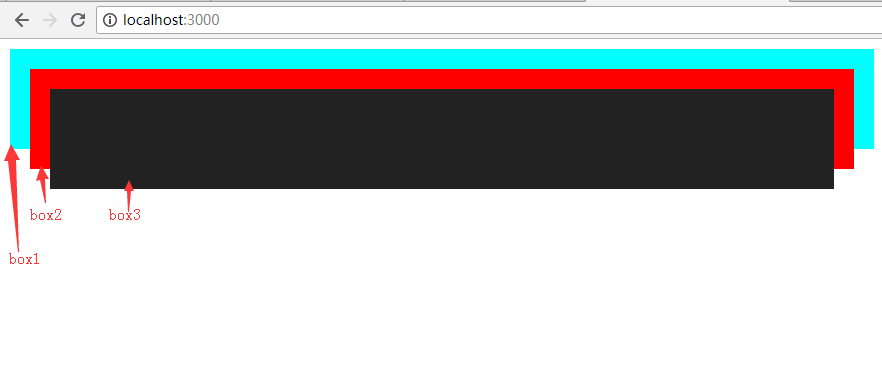Look directly at the chestnuts: 
Three div s on the page, as shown in the figure
1. When the native event registration is not involved and only react event is involved, e.stopPropagation() is used to prevent bubbling. The code is as follows:
import React, { Component } from 'react';
import './App.css';
class App extends Component {
handleClickTestBox = (e) => {
console.warn('handleClickTestBox: ', e);
}
handleClickTestBox2 = (e) => {
console.warn('handleClickTestBox2: ', e);
}
handleClickTestBox3 = (e) => {
e.stopPropagation();
console.warn('handleClickTestBox3: ', e);
}
render() {
return (
<div
className="test-box"
onClick={this.handleClickTestBox}
>
<div
onClick={this.handleClickTestBox2}
>
<div
onClick={this.handleClickTestBox3}
>
</div>
</div>
</div>
);
}
}
export default App;
Console printing: 
Successfully prevent bubbling of events
2. After registering the native event with document.addEventListener, e.stopPropagation() cannot prevent the bubbling between the document and e.nativeEvent.stopImmediatePropagation() method. The code is as follows:
import React, { Component } from 'react';
import './App.css';
class App extends Component {
componentDidMount() {
document.addEventListener('click', this.handleDocumentClick, false);
}
handleDocumentClick = (e) => {
console.log('handleDocumentClick: ', e);
}
handleClickTestBox = (e) => {
console.warn('handleClickTestBox: ', e);
}
handleClickTestBox2 = (e) => {
console.warn('handleClickTestBox2: ', e);
}
handleClickTestBox3 = (e) => {
// Prevent bubbling of synthetic events
e.stopPropagation();
// Stopping and bubbling of native events
e.nativeEvent.stopImmediatePropagation();
console.warn('handleClickTestBox3: ', e);
}
render() {
return (
<div
className="test-box"
onClick={this.handleClickTestBox}
>
<div
onClick={this.handleClickTestBox2}
>
<div
onClick={this.handleClickTestBox3}
>
</div>
</div>
</div>
);
}
}
export default App;

3. To prevent bubbles between synthetic events and non synthetic events (except document), the above two methods are not applicable. e.target judgment is needed. The code is as follows:
import React, { Component } from 'react';
import './App.css';
class App extends Component {
componentDidMount() {
document.addEventListener('click', this.handleDocumentClick, false);
document.body.addEventListener('click', this.handleBodyClick, false);
}
handleDocumentClick = (e) => {
console.log('handleDocumentClick: ', e);
}
handleBodyClick = (e) => {
if (e.target && e.target === document.querySelector('#inner')) {
return;
}
console.log('handleBodyClick: ', e);
}
handleClickTestBox = (e) => {
console.warn('handleClickTestBox: ', e);
}
handleClickTestBox2 = (e) => {
console.warn('handleClickTestBox2: ', e);
}
handleClickTestBox3 = (e) => {
// Prevent bubbling of synthetic events
e.stopPropagation();
// Stopping and bubbling of native events
e.nativeEvent.stopImmediatePropagation();
console.warn('handleClickTestBox3: ', e);
}
render() {
return (
<div
className="test-box"
onClick={this.handleClickTestBox}
>
<div
onClick={this.handleClickTestBox2}
>
<div
id="inner"
onClick={this.handleClickTestBox3}
>
</div>
</div>
</div>
);
}
}
export default App;
Console printing: 